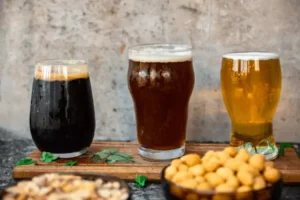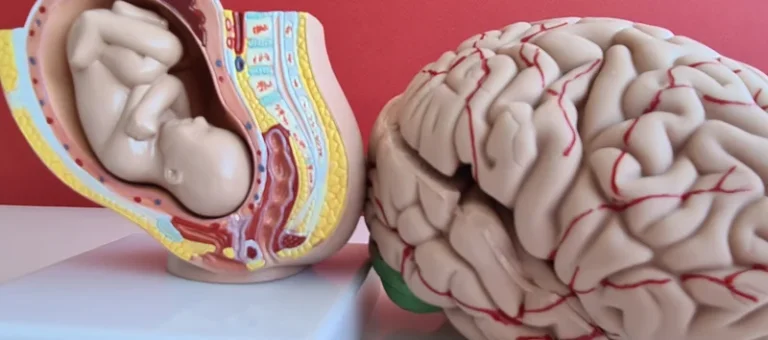
If you’re involved in a 12-step program, you likely already know the importance of milestones. In these programs, it’s customary to receive plastic chips as you progress to the one-year mark, at which time you receive a bronze coin. Although these new activities being sober around drinkers are healthy and productive, they can be a stumbling block to lasting recovery if they become a transfer addiction to fill the void left by the original addiction. Most people who make their way into recovery have left a lot of pain and suffering in their wake.
How to Stay Sober
In addition to this helpline, numerous online platforms offer addiction recovery services. They connect individuals with certified therapists who specialize in addiction counseling via secure video calls or text messages, making professional assistance readily accessible whenever required. https://ecosoberhouse.com/ In addition, staying sober can save you money which would otherwise be spent on buying drinks at bars or restaurants – another reason worth celebrating. Being sober also means being present in every moment without clouded judgment or impaired senses due to alcohol consumption.

The Downside of Sobriety
After detoxification, other treatments must be undertaken to deal with the underlying addiction that caused the alcohol abuse. Participants talked about the importance of setting expectations to reduce external pressure to drink alcohol. When drinking with friends this often involved warning people in advance that they would not be drinking or setting a drinking limit. Some participants felt this would be less disappointing to friends and less likely to be perceived as a personal slight or rejection. They also talked about feeling they needed to have socially acceptable reasons for not drinking alcohol, which included working the next day, driving or training for a sports event.
Building a Relapse Prevention Plan

Several cities worldwide are picking up on people’s need to engage in alcohol-free activities and find a community with like-minded individuals. Lake Ariel Recovery Center, like all of the Sanctuary Health Group facilities, is a medically proven recovery facility that provides comprehensive treatment for substance use and co-occurring disorders. Sanctuary Health utilizes Everlasting Recovery, an approach that aligns our client’s recovery journey directly with their life, to extend recovery into a client’s lifestyle.
Surround Yourself With Supportive People
Environmental factors, such as family history, peer pressure, and stress, can also contribute to a person’s risk of developing AUD. Being aware of these factors is crucial when considering drinking alcohol again after a period of sobriety. By understanding the complex interplay between genetics and environmental factors, individuals can better navigate the challenges of long-term recovery and make decisions that support their well-being. Abstinence from alcohol has been proven to be the most effective way to maintain sobriety, especially for recovering alcoholics. Seeking professional help from experts at institutions like Lantana can empower individuals to live a happy and sober life, increasing their chances for long-term recovery by offering valuable education and guidance.
How to Find Sober Friends
This article discusses the meaning of sobriety and arms you with information and strategies to smooth—and stay on—your path to wellness. This can include toxic relationships in which you feel unheard, misunderstood, unsupported, demeaned, unsafe, and/or attacked. Relapse (using substances again after stopping) can and does happen, with 85% of people experiencing relapse at least once and half of them doing so within the first two weeks of sobriety. “If you have a slip, it makes a full relapse less likely,” Willenbring says.
- Relapse is common, and it can take five or six relapses before a person maintains positive changes.
- One patient told me that his father — who he knew liked a drink — always abstained when they were together in drinking situations out of solidarity and support for his son.
- For others, being the only sober person in the room can be awkward, and being responsible for getting other people home may be too much pressure.
- Participants discussed different tactics for Diluting and substituting drinks within drinking contexts.
- Clinically, Warren has developed a therapeutic skillset that utilizes a strengths-based perspective, Twelve Step philosophies, Cognitive Behavioral Therapy and Motivational Interviewing.
Alongside Drinking motives, Situational pressures to drink also differed by drinking context which impacted on the suitability of different reduction approaches. In social, on-trade contexts, dilution and substitution tactics which enabled people to remain part of the ‘in-group’ of drinkers were preferred to tactics that marked them as a non-drinking other. Particularly with bigger events, participants felt this approach allowed them to engage in covert reduction, where they could ‘present as a drinker’ and therefore avoid pressure to drink alcohol. Participants differentiated between social expectations to drink, where drinking alcohol was perceived as the default or expected behaviour, and social pressure, more explicit peer pressure from friends. Both contributed to participants feeling that there were social costs to reducing their alcohol consumption within social settings.
- One study found that 68% of people treated in a detox unit experienced moderate alcohol withdrawal symptoms.
- Many may not know that about one-third of U.S. adults report consuming no alcohol at all in the past year.
- However, there is currently no strong evidence to suggest that exercise can help metabolize alcohol quicker.
- There are common setbacks to getting and staying sober like withdrawal, craving, and pressure to use.
- I am very happy and grateful to be two years sober, but I wish I’d known then, what I know now.
For some participants, this was exacerbated by previously trying, but not enjoying no-lo drinks. However, many participants did highlight that the range and quality of no-lo drinks had improved in recent years. Maintaining a presence at social events whilst having a strategy to reduce consumption may also relieve external pressure to drink. However, this was partly dependent on drink and occasion type, with participants feeling it would be easier to pass as a drinker in the pub or in a larger group. Participants discussed different tactics for Diluting and substituting drinks within drinking contexts. This theme encompassed the most tactics; alternating alcoholic drinks with soft drinks or no and low alcohol (no-lo) drinks, drinking lower strength drinks and having smaller drinks or measures.

Monday AA Meetings in Fairfax

After all, you can’t hang around your drug dealer or old drinking buddies and expect to remain sober for very long. Milestones in sobriety (e.g., 24 hours, a month, three months) are celebrated to recognize the incredible hard work that’s been accomplished through staying sober for a certain length of time. They can help motivate a person to remain sober to reach the next milestone. Triggers for using drugs and alcohol typically are people, places, and things that remind you of your addictive behavior or encourage the use of substances you’re avoiding. Sobriety can be a fixed-term goal like staying sober for a set period (such as Dry January), or a lifelong goal of staying sober from all substances.
